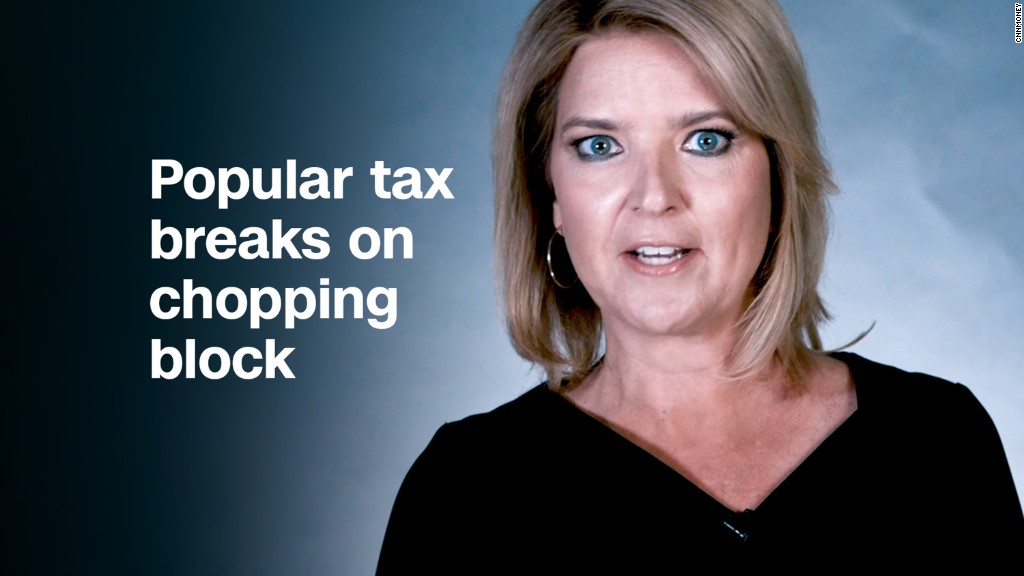
The White House is actively marketing the promise that President Trump's tax plan will mean at least $4,000 more in income every year for the average household.
That figure is based on a report by Trump's chief economist Kevin Hassett, who looked at various studies to gauge how cutting the corporate tax rate to 20% from 35% today might affect workers' pay.
A second report from Hassett released Friday, which looked at the combined effect of a corporate rate cut and letting companies immediately expense many investments, came to a similar conclusion.
But before anyone reworks their budget to make way for all that new cash, here are a few things to keep in mind:
Some economists have serious doubts
Most economists can agree that "well-designed tax changes can improve living standards over time," said Donald Marron, a former acting director of the Congressional Budget Office who now is director of economic policy initiatives at the Urban Institute.
But they part company on just how big the benefit to wages could be. In fact, it's among the most unresolved issues in economics today.
Jason Furman, who ran the Council of Economic Advisers under President Obama and is Hassett's immediate predecessor, characterized the claim that average working households might see $4,000 to $9,000 more in income every year as "wild" in a recent Wall Street Journal opinion piece.
Even an economist whose research Hassett cited in his study pushed back against the $4,000 claim as being far too high. "Cutting corporate taxes will help wages but exaggeration only serves to undercut the reasonableness of the core argument," Harvard finance professor Mihir Desai tweeted.
A lot of mainstream economists would agree. "If you just go by weight of opinion by people who think about this for a living, [the boost to income] will probably be much lower than $4,000," Marron said.
Some, however, aren't shocked by Hassett's estimate. Using a comprehensive model he developed with colleagues over several years, Boston University economics professor Laurence Kotlikoff estimated the entire tax reform framework negotiated by the White House and Republican leaders could potentially generate enough growth to boost average working household incomes by $3,500 a year.
Related: White House explains why it believes corporate tax cuts mean bigger paychecks
That said, Kotlikoff noted that there's always some uncertainty with any model. "I don't think what [Hassett] suggested is out of the range of possibility. Nor do I think zero is out of the range of possibility."
More income per household doesn't mean per paycheck
Hassett's report measures the potential wage gains by household. And his $4,000 estimate applies to both households that bring in the mean (or average) income in the country ($83,143 in 2016 per Census data) as well as the median income ($59,039).
Related: Cutting U.S. corporate taxes could mean a windfall for foreign investors
But that's not the same as saying every worker would see a $4,000 raise, since the Census Bureau reports that there is more than one earner on average in households at those income levels.
Other tax changes may undercut the potential benefits
The $4,000 estimate is based on the prospect of lowering the corporate rate to 20% and letting businesses fully and immediately write off many capital investments.
If lawmakers can't get the rate that low (e.g., because of deficit concerns), or if they make the rate cut temporary or in some other way inhibit the incentive to invest, that could curtail potential wage gains.
"If there were lots of other changes that we haven't modeled that worked in the other direction, then these numbers could change," Hassett noted in a press briefing.
A boost to income won't happen right away
In a briefing with reporters, Hassett allowed that "it's hard to come up with a model that jumps to $4,000 in the first year."
And he noted in his second report that estimates vary as to when wages might grow, with some models suggesting it could take three to five years, and others estimating it could take at least twice that long.
In fact, no one knows quite how long it might take for a corporate rate cut to start affecting wages.
Kotlikoff, for instance, estimates that average household income under the GOP tax reform framework might rise by $3,500 within six to eight years.
Updated: This article has been updated to incorporate information from a second paper by Kevin Hassett released on Friday.


